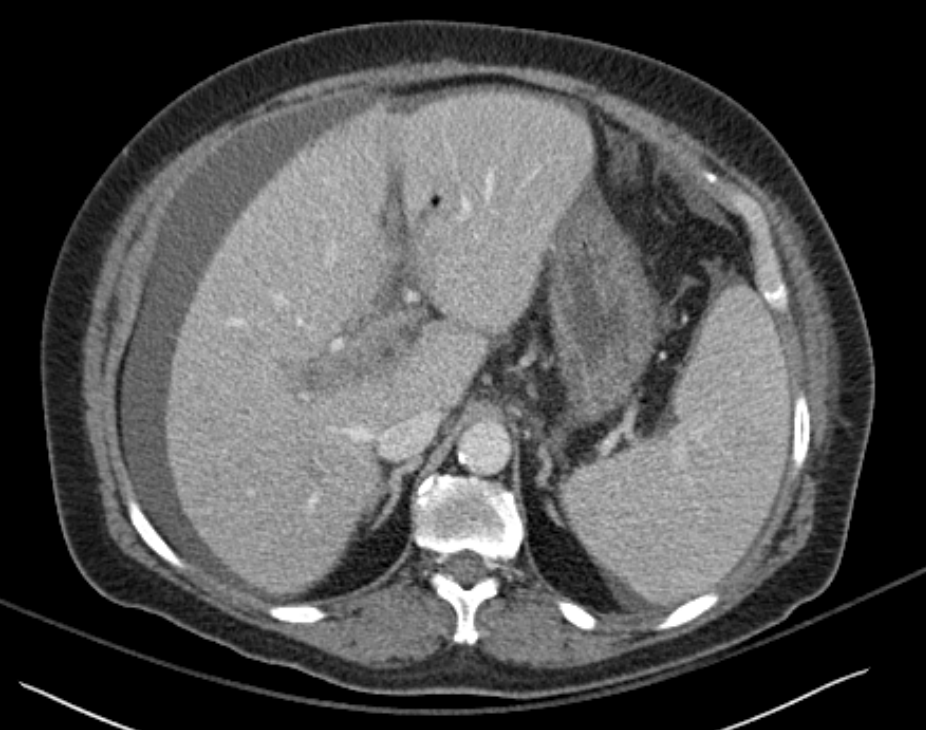Case Presentation: A 59-year-old female with a history of hypertension and hyperlipidemia presented to the ED with severe left lower quadrant abdominal, pelvic pain, and nausea. CT of the abdomen/pelvis showed findings of acute diverticulitis. She was admitted and managed medically with bowel rest and IV ciprofloxacin and metronidazole. She was discharged on oral antibiotics. Unfortunately, two days after discharge she returned to the ED with right upper quadrant pain and fever. Labs were notable for leukocytosis and transaminitis. CT showed portal venous gas, thrombus in the portal vein and inferior mesenteric vein (IMV), and a small abscess in the pelvis. She was initiated on IV ciprofloxacin, metronidazole, and heparin. Blood cultures grew candida albicans and C. dubliniensis, and was started on anidulafungin. Despite antimicrobials, the pain worsened over the subsequent days with persistent fevers. She was broadened to meropenem and daptomycin. Repeat imaging showed septic thrombophlebitis, phlegmon around the IMV, and ischemia of several loops of small bowel without perforation. She was urgently taken to the OR for washout, left colectomy, colostomy, and drain placement. Fluid collections drained intraoperatively grew Streptococcus anginosis, Lactobacillus rhamnosus, L. paracasei, and C. albicans. She was discharged on piperacillin-tazobactam IV for 3 weeks, anidulafungin for 6 weeks, and apixaban for 6 months.
Discussion: Mesenteric pylephlebitis is suppurative thrombophlebitis of the portal vein. It is usually nonobstructive but can result in extension of the thrombus to the mesenteric and splenic veins, bowel ischemia, hepatic abscess, and, rarely, acute portal hypertension with variceal hemorrhage. Bacteremia occurs in 44-88% of cases, and it is usually polymicrobial. The most common organisms are E. coli, Bacteroides fragilis, and streptococcus. CT with IV contrast is the best study for diagnosis and monitoring. Treatment includes 4-6 weeks of antibiotics. Anticoagulation is controversial but usually unnecessary. It may be considered if there is progression of the thrombus or persistent fevers/bacteremia. Mortality ranges between 11% and 32%.
Conclusions: Pylephlebitis is a rare complication that can occur following infection of any portion of the GI tract drained by the portal system. It typically presents with right upper quadrant abdominal pain and fever in a patient with another intraabdominal infection. Recognition is critical as the infected thrombus requires a prolonged duration of antibiotic therapy and sometimes systemic anticoagulation to prevent significant morbidity and mortality.

